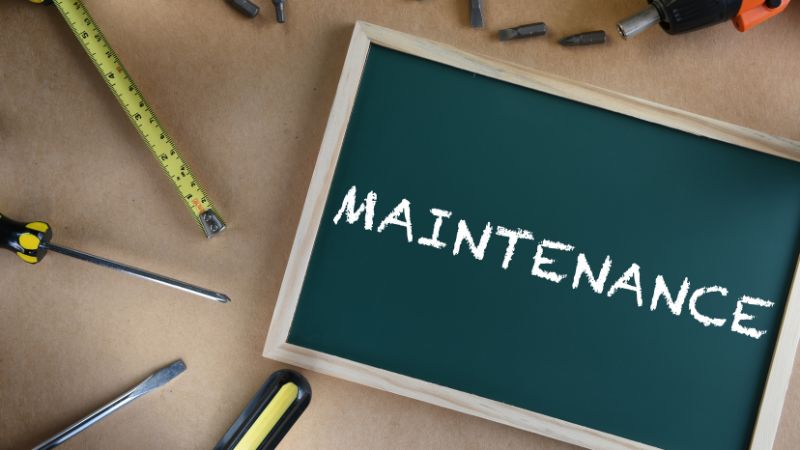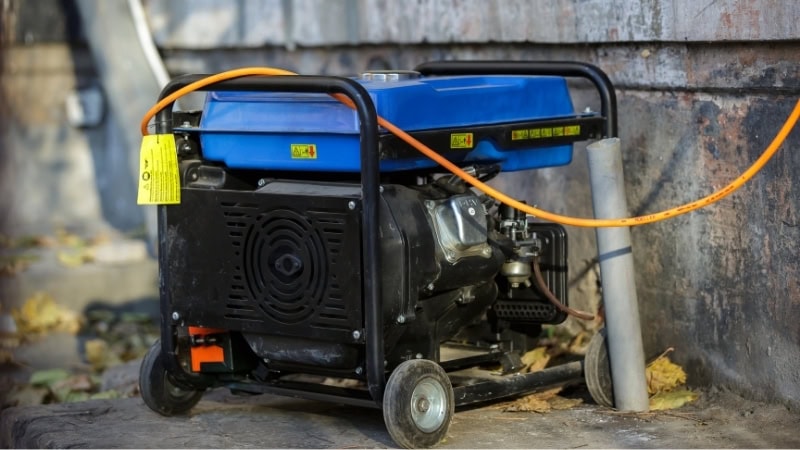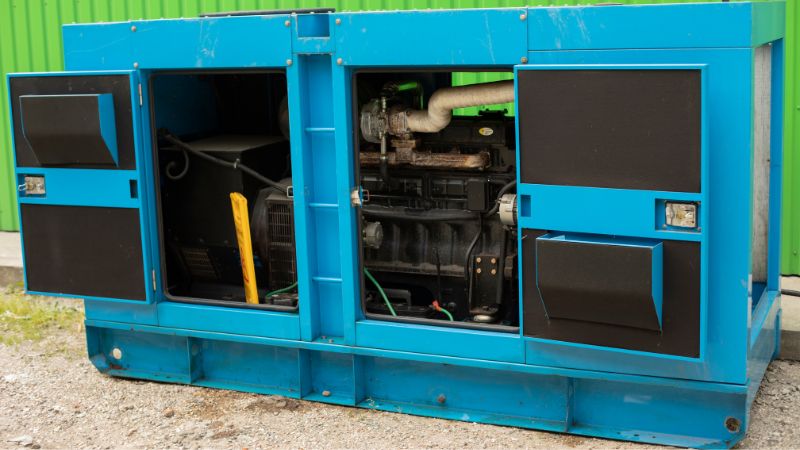
Your generator is your ultimate backup plan, but it won’t last on its own. Without basic care, it will fail when you need it most. Regular maintenance takes just minutes but ensures years of reliable power.
This quick guide shows you the essential steps to keep your generator ready for anything. Protect your investment with these simple checks anyone can do.
Why Generator Maintenance Services Matter

Think of your generator as a power athlete. It sits on the sidelines most of the time, but when called upon, it has to perform at 100% immediately. Without regular check-ups, its performance drops.
First, maintenance is a safety issue. A poorly maintained generator can be a fire hazard or, even more dangerously, produce carbon monoxide gas through its exhaust system, which you cannot see or smell. Keeping your generator clean and in good shape reduces these risks.
Second, it’s about reliability. The single biggest reason generators fail to start is old, sticky fuel left in the system. Regular maintenance prevents this gunk from building up, so your generator starts on the first or second pull.
Finally, it saves you money. A simple $10 air filter is much cheaper than a $300 repair for a damaged engine. Taking care of small things now prevents big, expensive problems later.
What Should You Check?
You don’t need a garage full of tools to keep your generator happy. Here are the key maintenance tasks you should learn. Always start by reading your owner’s manual. It has specific instructions for your model. Before any work, make sure the engine is cool, the spark plug is disconnected, and you’re working in a well-ventilated area.
The Oil System
Oil is the lifeblood of your generator’s engine. It keeps all the moving parts lubricated so they don’t grind together and wear out.
- How to Check: Find the oil dipstick, usually on the side of the engine. Pull it out, wipe it clean with a rag, put it back in fully, and then pull it out again to get a true reading. The oil level should be between the two marks on the dipstick. The oil itself should look clean and amber-colored, not black and gritty.
- When to Change: Change the oil after the first 5-10 hours of use (this is called the break-in period). After that, change it every 50-100 hours of use or at least once a year, even if you haven’t used it much.
- How to Change: To replace the oil, you’ll need an oil drain pan and the correct type of new oil. After the engine has run for a minute to warm the oil up (making it flow more easily), turn it off. Place the pan under the drain plug, remove the plug, and let the old oil drain out completely. Put the drain plug back in and refill with new oil through the fill hole, checking the dipstick to make sure you don’t overfill.
Air Filter
Your generator’s engine needs to “breathe” clean air for optimal function. The air filter’s job is to stop dust and dirt from getting inside the engine, where it can cause damage.
- How to Check/Service: The air filter is usually housed under a cover on the side of the engine, held in by a clip or a few screws. A quick visual inspection will tell you if it’s dirty. If it’s a paper filter and looks dirty, replace it. If it’s a foam filter, you can usually wash it in warm, soapy water, let it air dry completely, and then put a few drops of clean engine oil on it before putting it back in.
Spark Plugs
The spark plug is what creates the small spark that ignites the fuel to start the engine. A worn-out plug hurts efficiency and makes starting difficult.
- How to Check/Service: Locate the spark plug (it’s a short, thick wire leading to a porcelain-coated plug screwed into the engine). Disconnect the wire. Use a spark plug socket to carefully unscrew the plug. Look at the tip. It should be a light tan or gray color. If it’s black with soot or has a burned electrode, it’s time for a new one. When putting in a new plug, make sure the gap (the space between the electrode and the tip) is set correctly—your manual will tell you the right measurement.
Fuel System
This is the most common area for problems. When gas sits in the tank for months, it breaks down and turns into a sticky varnish that clogs the small passages in the carburetor.
How to Maintain: The best thing you can do for your generator is to take care of the fuel. If you’re storing your generator for more than a month, you have two good options:
- Add a Fuel Stabilizer: Pour a fuel stabilizer into the gas tank. Then run the generator for 5-10 minutes to make sure the treated gas circulates through the entire fuel system. This keeps the gas fresh.
- Drain the System: For long-term storage, the best practice is to turn off the fuel valve and let the engine run until it uses all the gas in the carburetor and stops on its own. This leaves the system dry and clean.
Cooling System

Generators get very hot and have cooling fins (like a radiator) around the engine to help them stay at the right temperature. If these fins get clogged with dirt, grass, or leaves, the engine can overheat.
- How to Check: Simply look at the engine casing. You should see clean, open metal fins all around it.
- How to Service: Use a soft brush or a blast of compressed air to gently clean out any debris from the cooling fins. Be careful not to damage the fins.
Electrical System
For the electrical parts, a visual check is often enough for basic maintenance.
- How to Check: Look at the power outlets on the generator for any dirt or damage. Check all the cords you plug into it for fraying or cracks. If your generator has a battery (for electric start), check that the connections are tight and free of green or white corrosion. You can clean corrosion with a mix of baking soda and water and a wire brush.
Troubleshooting Common Generator Issues
Even with good care, sometimes problems pop up. Here’s a quick guide to figuring out what’s wrong.
- Check the Obvious: Is the fuel valve on? Is there enough gas?
- Next Steps: Check the oil level. Many generators have a low-oil safety switch that prevents starting if the oil is too low. Is the spark plug wire connected?
- Likely Cause: If those are okay, it’s probably old fuel and a clogged carburetor.
Low oil pressure warning:
- What to Do: Stop the engine immediately! Running with low oil can destroy the engine.
- The Fix: Let the engine cool, then check the oil level and add more if needed. Look for any signs of an oil leak.
Overheating:
- What to Do: Turn the generator off and let it cool down.
- The Fix: Once cool, check the cooling fins and clean them if they are dirty. Also, make sure the generator is not overloaded with too many appliances plugged in.
Fuel leaks and smells:
- What to Do: This is a serious fire hazard. Do not start the generator.
- The Fix: Look for the source of the leak. It could be a cracked fuel line or a problem with the fuel tank. This may require a technician to repair.
Frequently Asked Questions
What’s the difference between maintaining a portable vs a standby generator?
Portable generators require more hands-on maintenance as they’re exposed to the elements and typically have smaller engines. Standby generators are permanently installed and often come with automatic weekly self-tests and professional maintenance contracts. However, both need regular oil changes, filter replacements, and fuel system maintenance, though standby units typically have longer service intervals.
How can I extend my generator’s lifespan?
To significantly extend your generator’s life: always use fresh fuel with stabilizer, change oil regularly, keep the unit clean and covered when not in use, avoid overloading the capacity, and run it under load for 30-60 minutes monthly to keep components lubricated and prevent moisture buildup.
Are diesel generators different to maintain than gasoline models?
Yes, diesel generators have some key maintenance differences. They don’t have spark plugs but may have glow plugs; they’re more susceptible to water contamination in fuel (requiring regular fuel filter changes and water separators); and they typically have longer service intervals but higher maintenance costs when service is needed.
When should I call a professional to inspect my generator?
Call a professional for: electrical issues beyond basic cord inspection, carburetor cleaning/rebuilding if you’re uncomfortable doing it yourself, any major engine repairs, standby generator annual maintenance, and if you notice concerning symptoms like excessive smoke, unusual noises, or persistent performance issues despite your basic maintenance.
Conclusion
Taking care of your generator is a simple and powerful way to protect your home and family. By spending just a little time each year checking the oil, cleaning the air filter, and managing the fuel, you can avoid the huge frustration of a generator that won’t start in a power outage. Think of this maintenance not as a chore, but as an insurance policy. So, find your owner’s manual, grab a few basic supplies, and give your generator the TLC it deserves. You’ll be glad you did.
